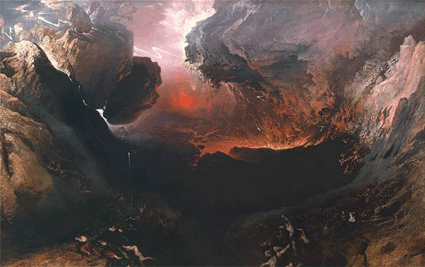“John Martin: Apocalypse” at Tate Britain.
To say that the art of John Martin divided nineteenth-century critical opinion would be something of an understatement. The eminent Victorian, Edward Bulwer Lytton – the man who coined the phrase “the pen is mightier than the sword” – declared Martin to be “the greatest, the most lofty, the most original genius of the age”. But Samuel Taylor Coleridge thought he was “a poor creature” who “looked at Nature through bits of stained glass, and was never satisfied with any appearance that was not prodigious”; and John Ruskin proclaimed that “Martin’s works are merely a common manufacture, as much makeable to order as a tea-tray or a coal scuttle.”
“John Martin: Apocalypse”, at Tate Britain, the most extensive exhibition of the painter’s work since his death in 1854, is an opportunity to see what all the fuss was about. On this evidence, his genius is open to question but he was certainly a thunderously entertaining painter of death, destruction and doom. Martin was born in 1789, the bloodstained year of the French Revolution, and he burst on to the British art scene in the second decade of the nineteenth century with a series of nightmarishly apocalyptic, attention-grabbing melodramas inspired by the stories of the Old Testament. Panoramic in scale, lurid in palette and subject matter, Joshua Commanding the Sun to Stand Still upon Gibeon was the picture that made his reputation. Beneath a tempestuous sky, swirling with storm and hurricane, the army of the heathen Amorites seethes like a swarm of ants about to be exterminated. The Israelite leader Joshua stands on a jaggedly upthrust rock – the first of many such violently shaped peaks and crags to be found in the agitated geology of Martin’s imagination – surveying the scene with triumphant complacency....


